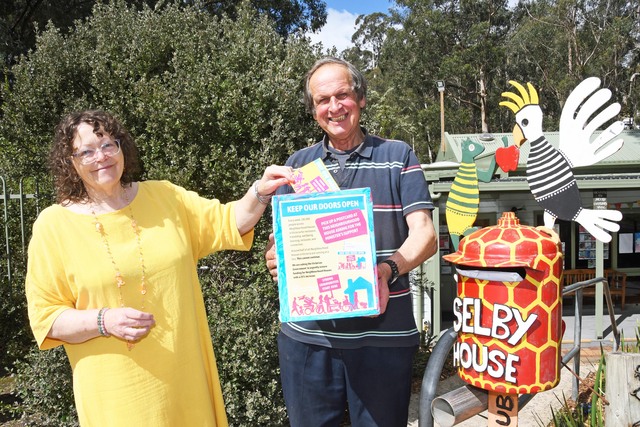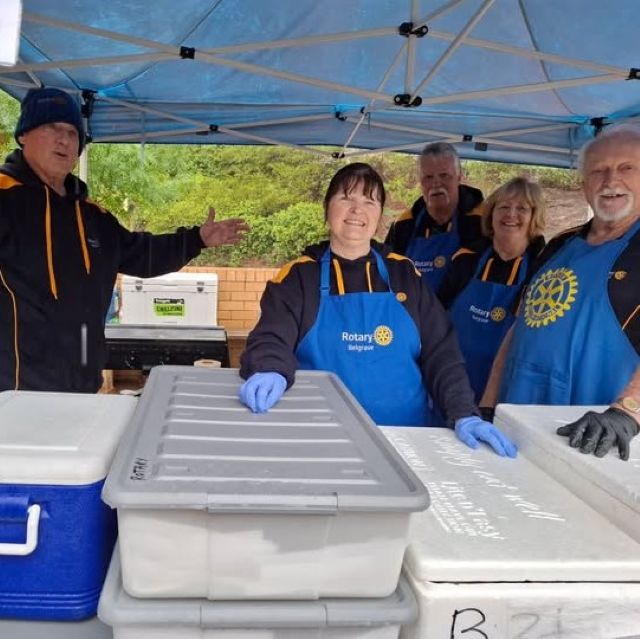Sweeping hills, deep gullies and thick temperate rainforests are sights you will find the Dandenong Ranges, which were borne out of the remains of an extinct volcano that erupted over 350 million years ago.
The region is home to a wide variety of native Australian species which rely on its qualities to protect and foster populations of animals like the superb lyrebird, short-beaked echidnas and sugar gliders.
But last month, the State of the Environment 2021 report revealed Australia’s environment is “poor and deteriorating” because of climate change, land clearing, invasive species, pollution and urban expansion.
Those who care deeply for the Ranges and its natural habitat weren’t surprised by the report and said the vulnerable natural ecosystems are nearing “the tipping point.”
President of the Southern Dandenongs Landcare Group Rob Pergl said while there are other issues of concern, the three “big-ticket items” are invasive weeds, stormwater runoff and the effects of a changing climate.
“The Dandenong Ranges are a unique environment, there’s a range of species that occur here which are locally significant to the area that doesn’t occur anywhere else,” he said.
“The environment ranges from the very tall mountain ash trees, tree-lined fern gullies to the foothills of the Dandenongs where you’ll find a very high diversity of heathland species.”
Having been involved in environmental and Landcare groups since the late 1990s, Mr Pergl said weeds replacing the native flora have become a huge issue for the surrounding ecosystems.
“In a nutshell, we’ve got issues with waves that are basically out competing and displacing our natives, our local native vegetation,” he said.
Knox Environment Society (KES) president Richard Faragher said the issue of invasive species is particularly bad in the Dandenongs.
“We tend to shut out all of the flora on the ground floor and people see the damage when trees come down,” he said.
“Particularly in wet areas, because people don’t get in and clean them up, a lot of places are just choked with weeds.”
KES has been cultivating and collecting Indigenous plant seeds to store in a bank at their nursery in Ferntree Gully, in an effort to preserve and catalogue the plants indigenous in the area and the Landare Group recently had over 30 people join together to plant 500 indigenous plants at Belgrave Lake Park.
Mr Faragher said climate change is also putting pressure on the natural environment as catastrophic weather events become more common.
“You can see that throughout the world. How often do you hear it’s the hottest or coldest or wettest ever?” he said.
“With climate change, it’s not the fact that things will get warmer, but it’s that huge difference in weather events experienced. We had the millennial drought and then huge bushfires. When you get a huge fire, it has a big effect that takes the bush a long time to recover from.”
The Dandenong Ranges is already one of the most bushfire-prone areas in the world. Climate modelling produced by the State Government said the greater Melbourne region has already become warmer and drier and as global temperatures rise, the Dandenongs will see not only more hot days and warm spells but also more frequent and intense downpours and unpredictable weather.
Another issue facing the native environment is the shrinking of natural habitats in areas where housing is being developed, according to Mr Faragher.
“We’ve got probably three or four per cent in nature reserves, but you’ve got a lot of areas on private property that gradually gets eaten away as well,” he said.
“People want to sell off the block next door and a house goes on there, so the vegetation, the plants and the animals living on there get pushed out,” he said.
“There is a lot more housing up compared to what there was 20 or 30 years ago.”
Organisations like the Dandenongs Landcare Group and Knox Environment Society are doing what they can to preserve and protect the precious ecosystems throughout the region, though Mr Pergl said it will take a huge change in practices and attitudes to save the environment from further damage.
“There needs to be a greater understanding and an associated imperative, which ensures that we take these issues seriously,” Mr Pergl said.
“The cost of inaction on a range of these issues is a well understood and documented threat, and will result in further degradation.”
Mr Faragher said it will take a big commitment made by everyone to change course and “if you’re living in the Dandenong you should commit to protecting the environment.”
“In many places, we’ve reached a tipping point if we haven’t already passed it. If we don’t act now, it’s going to be too late,” he said.
“A lot of the local animals that people enjoy seeing will slowly disappear and by the time they’re gone, it’s too late to do anything about it. All that enjoyment people get from seeing a wombat or a live bird or a Koala, all of a sudden, these things disappear and people say where have they gone? Unfortunately, it’s too late.”







